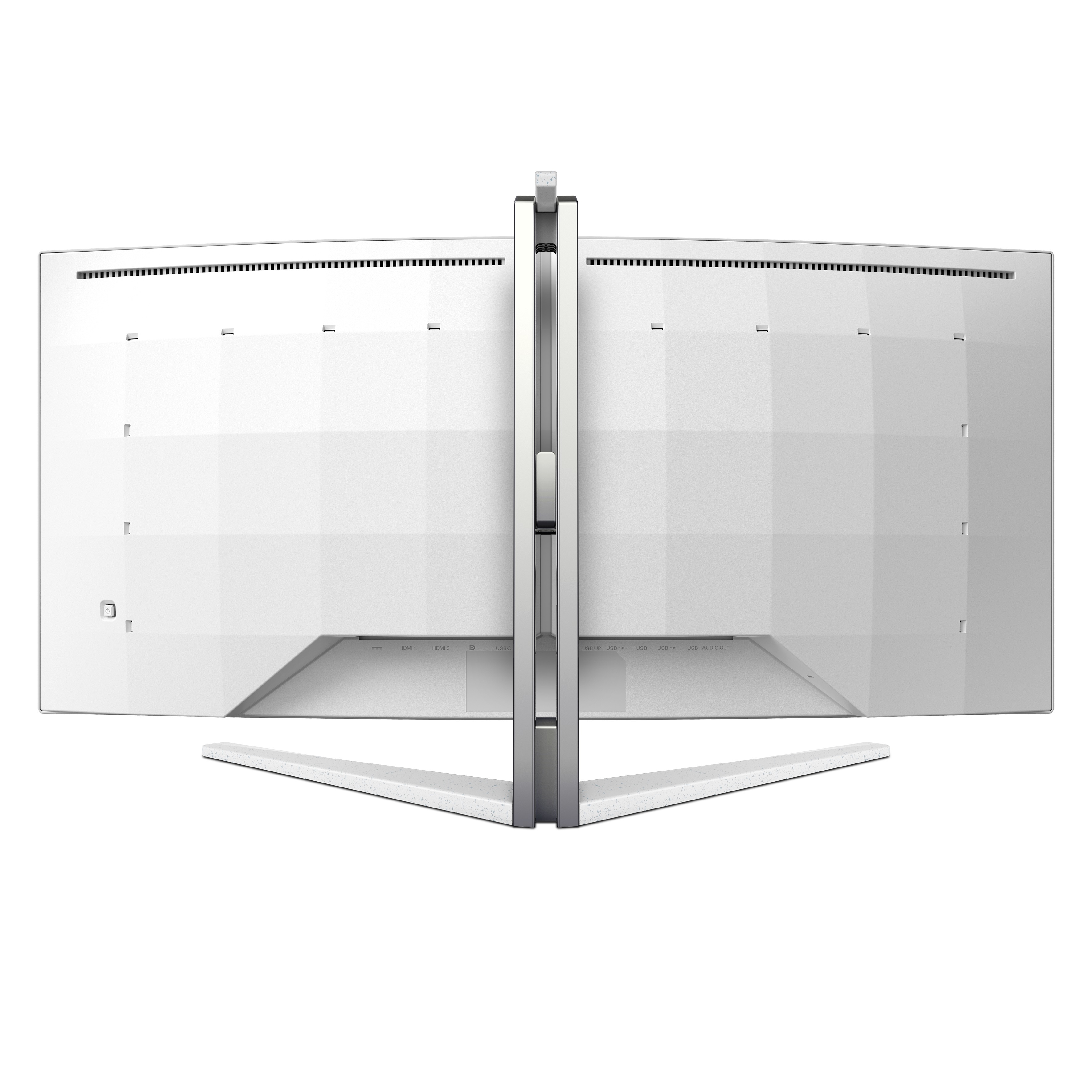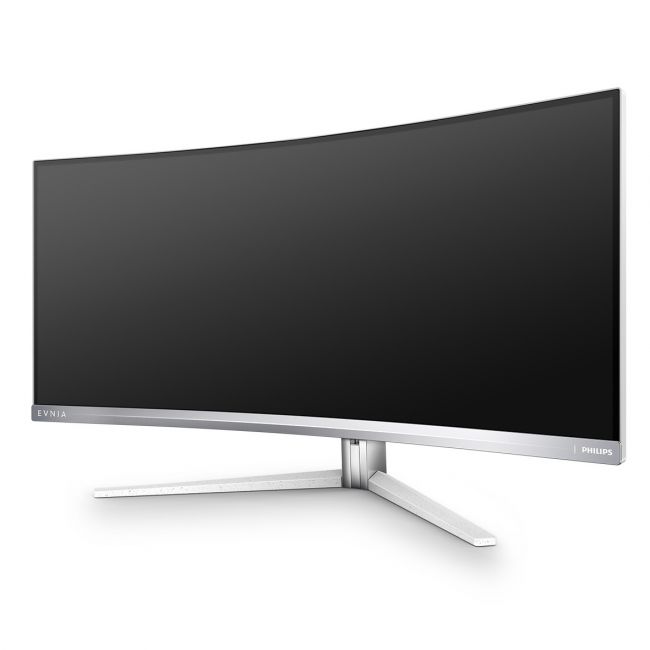Late last year, Philips introduced us to the Evnia brand for the first time, which in 2023 brings four premium displays for gamers. The range includes a 42″ 42M2N8900 OLED panel, the 34″ 34M2C8600 QD curved OLED panel, the 27″ 27M2C5500W curved VA panel and finally the miniLED 34″ 34″ curved VA illuminated panel that we were able to discover at a glance.
Its brilliant display is quite a sight to behold. It’s got a sharp look that’s certainly a refreshing change in a sea of dark screens. The vertical part of the light stand is fixed by a special light fixing system which presses it against the frame, i.e. the panel part, while the base is fixed to the support with a traditional thumb screw. You won’t need any tools. The VESA connection is made using a separate 10×10 cm metal connection adapter to the frame. In general, the mechanical setup of the monitor is good, other than the stand protruding very slightly from the front edge of the monitor panel. This allows you to position the monitor closer to the keyboard, covering even more of the field of view.
That’s very useful, since the 34-inch ultrawide is like a 27-inch screen but more elongated, although it’s small for those used to larger screens. Keep in mind that if the content you’re playing doesn’t support the ultrawide aspect ratio, you’ll end up with black borders and a 27-inch image of a lifetime. Thankfully, ultrawide support in games is improving these days, except for a few smaller indie games.
Advertisement:
The game is even more immersive thanks to the colored LEDs integrated behind the screen, which activate the AmbiLight function typical of Philips televisions. The LEDs fill the room with colors to match the visual effects on the screen and it looks very cool. The AmbiLight is controlled with the settings menu. Unfortunately, there are only three brightness options: bright, brighter, and much brighter. Although I would have called them “very dark”, “dark”, and “bright”. Well, if we count the shutdown option, there are four of them.
AmbiLight is great, but what about the clumsiness and slowness of the whole menu. I find it amazing even using a straight control pad which is supposed to make navigation easier. However, this is not the case, the pad is not used at all in the menus and in the end it only serves as an additional power button. In the menu, the four directions of the pad allow you to select. It gets worse when the four directions of the pad don’t maintain logical consistency across the menus, but instead change depending on whether you’re at the top or bottom level of the menu. Trying to close the menu is also problematic and can only be done from the top edges of the menu. Plus, it’s terribly slow. Switching between options at higher levels takes a second or two per selection. Luckily, there’s no need to worry about menus, as Factory Calibration allows for excellent image calibration right out of the box.
The backlighting of the VA panel, which supports 165 Hz VRR, is achieved with thousands of miniLEDs divided into 1152 illuminated zones. Black is real black and light is real light. There are so many lighting areas that even with a black background, you won’t see a specific point of light around the white mouse cursor. The precise backlight also gives you a stunning HDR experience. The display’s dizzying HDR1400, or 1400 nits of peak brightness, gives you an incredible experience, just as HDR should be. There will be dark areas and literally dazzling areas at the same time. The immersion in the games is amazing.
Advertisement:
The problem with VA panels is smooth motion blur which actually looks more like iron motion. And no solution has been released yet. There are faster VA panels on the market, but there is a lot of talk about them. It’s worth mentioning that there are very few professional gamers playing ultrawide (at least not VA panels). In the control menu we find the overdrive, which can improve the situation to some extent, but it is not salvation either. The highest overdrive setting is completely unnecessary, with clear overdrive giving an inverted shadow image on screen.
It’s a high-end display with an impressive and technically incredible design, but its over $1,700 price tag is by far its biggest problem. If we removed the built-in speakers, the manufacturing cost would decrease at least a little. It is also worth mentioning that during the one-month trial period, the selling price seems to have dropped considerably from the recommended price, which was over 2000 euros. It’s going in the right direction.
The high price can also be offset by its premium features. In addition to AmbiLight, the monitor incorporates a KVM switch that allows you to connect multiple devices at the same time, using the same keyboard and mouse in addition to the monitor. If, for example, you also connect the mobile or tablet via USB type C, you can use the mobile or tablet and mirror the screen on the monitor, but we could not test it.
In short, the 1152-zone miniLED backlight delivers an incredibly impressive HDR experience. On the other hand, the panel doesn’t feel as snappy as you’d expect for this price. Also, the small menu issues become more important when you consider the price. But thankfully, Philips has announced that the screen’s software is upgradable, so that slow and clunky menu will most likely go away in the future.




